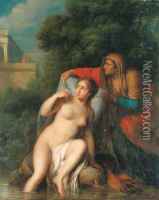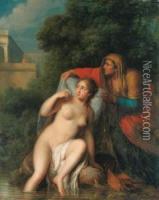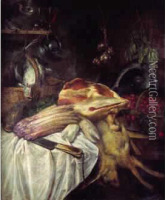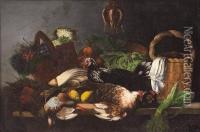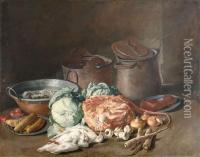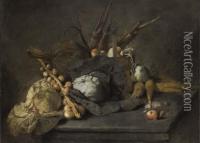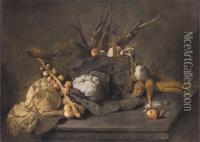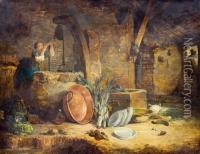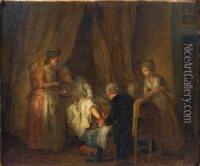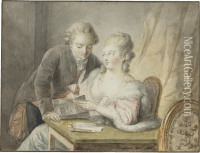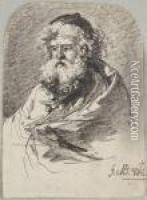Michel-Honore Bounieu Paintings
Michel-Honore Bounieu was a French painter, born in 1740 in Grasse, a town in the Provence region of France. He is less widely known today compared to other artists of his time, but during his life, he was recognized for his contributions to French art, particularly in the genres of still life and portrait painting. Bounieu's early life is not extensively documented, but it is known that he developed an interest in art at a young age and likely received formal training in painting.
In the 1760s, Bounieu moved to Paris, the cultural and artistic hub of France, to further his career. There, he became associated with other artists and intellectuals of the period. He was influenced by the prevailing Rococo style, which was characterized by lightness, elegance, and an emphasis on decorative elements. However, Bounieu's work also showed signs of transitioning towards the Neoclassicism that would dominate the latter part of the 18th century, reflecting a shift in artistic tastes and philosophies.
Bounieu exhibited his works at the Paris Salon, an official art exhibition of the Académie des Beaux-Arts in Paris, on several occasions. His paintings were well received, earning him recognition and patronage. Despite this, details of his career and specific works remain relatively obscure, and only a limited number of his paintings have been clearly attributed to him.
Throughout his career, Bounieu remained dedicated to the traditional subjects of still life and portraiture, often blending the two by including intricate still life arrangements in his portrait backgrounds. His style is noted for its detailed realism and the vivid portrayal of textures and surfaces, a testament to his observational skills and technical ability.
Michel-Honore Bounieu's life and career were part of a transitional period in French art, bridging the late Rococo and early Neoclassical periods. He passed away in 1814, at the age of 74. While Bounieu may not be as celebrated as some of his contemporaries, his work provides valuable insight into the artistic trends and cultural shifts of his time.
